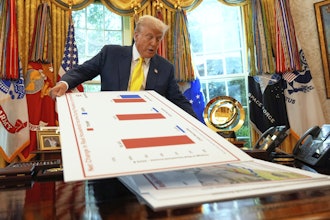WASHINGTON (AP) — Plunging gasoline costs pulled U.S. consumer prices lower in November, muting inflation across the entire economy.
The Labor Department said Wednesday the inflation reading fell a seasonally-adjusted 0.3 percent last month, after prices were flat in October. Gas costs plummeted 10.5 percent in November, the steepest decline in nearly six years.
"If you're looking for signs of inflation, you will have to look elsewhere," said Jennifer Lee, an economist at BMO Capital Markets.
Core inflation, which excludes volatile energy and food prices, rose 0.1 percent in November. For the past 12 months, overall inflation has risen 1.3 percent while core inflation has increased 1.7 percent.
Both annual gains are well below the Federal Reserve's 2 percent inflation target. This gives Fed officials who ended their policy meeting Wednesday afternoon significant leeway to keep a key interest rate at near zero, which helps infuse the economy with capital to boost economic growth and hiring.
Falling oil prices and a strong dollar, which lowers the price of foreign-made goods, have combined to curb inflation. Prices have barely budged, even though hiring has picked up and the unemployment rate has fallen to 5.8 percent.
The average price of a barrel of oil has dropped below $56 from a summer high of $107. That reflects less global demand as Japan has tumbled into a recession, Europe staves off a slowdown, China manages an economy with less momentum and Russia copes with its collapsing currency. But U.S. consumers have largely been insulated from these pressures and benefited from less expensive oil.
Average gas prices nationally have dropped to $2.53 a gallon from $2.89 a month ago and $3.23 a year ago. This suggests that inflation remained subdued in December and may remain modest in the coming months.
Cheaper gas frees up income to be spent elsewhere, often helping to support other sectors of the economy.
Consumer prices did rise last month for medical care, airline fares, alcohol, beef, ham and chicken. But they also slipped for clothing, household furnishings and autos.
The benefits of lower gas prices appear to have spilled over to consumer spending at the start of the holiday shopping season.
Retail sales rose a seasonally-adjusted 0.7 percent in November.
Spending on motor vehicles accelerated 1.7 percent, while purchases at clothiers, online retailers, electronics stores and department stores all expanded.
A prolonged rise in consumer spending should eventually push up core inflation.
"We still expect the stronger economy to push core inflation above 2 percent late next year," said Paul Dales, senior U.S. economist at Capital Economics.






















